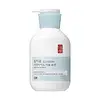What's inside
What's inside
 Key Ingredients
Key Ingredients

 Benefits
Benefits

 Concerns
Concerns

 Ingredients Side-by-side
Ingredients Side-by-side

Water
Skin ConditioningGlyceryl Stearate
EmollientCetyl Alcohol
EmollientStearic Acid
CleansingPropylene Glycol
HumectantPetrolatum
EmollientPEG-100 Stearate
Butylene Glycol
HumectantParaffinum Liquidum
EmollientDimethicone
EmollientParfum
MaskingMethylparaben
PreservativePropylparaben
PreservativeBHT
AntioxidantArbutin
AntioxidantCitric Acid
BufferingSodium Sulfite
PreservativeAcetyl Tyrosine
Skin ConditioningSaxifraga Sarmentosa Extract
Skin ConditioningPaeonia Suffruticosa Root Extract
Skin ProtectingAminopropyl Ascorbyl Phosphate
AntioxidantScutellaria Baicalensis Root Extract
AstringentGlutathione
Water, Glyceryl Stearate, Cetyl Alcohol, Stearic Acid, Propylene Glycol, Petrolatum, PEG-100 Stearate, Butylene Glycol, Paraffinum Liquidum, Dimethicone, Parfum, Methylparaben, Propylparaben, BHT, Arbutin, Citric Acid, Sodium Sulfite, Acetyl Tyrosine, Saxifraga Sarmentosa Extract, Paeonia Suffruticosa Root Extract, Aminopropyl Ascorbyl Phosphate, Scutellaria Baicalensis Root Extract, Glutathione
Water
Skin ConditioningGlycerin
HumectantPropanediol
SolventHydrogenated Rice Bran Oil
Skin ConditioningCyclopentasiloxane
EmollientHydrogenated Poly(C6-14 Olefin)
EmollientCyclohexasiloxane
EmollientDimethicone
EmollientCetyl Ethylhexanoate
EmollientDiisostearyl Malate
Emollient1,2-Hexanediol
Skin ConditioningButylene Glycol
HumectantHydroxyethyl Acrylate/Sodium Acryloyldimethyl Taurate Copolymer
Emulsion StabilisingC14-22 Alcohols
Emulsion StabilisingArachidyl Alcohol
EmollientStearic Acid
CleansingGlyceryl Stearate
EmollientPalmitic Acid
EmollientBehenyl Alcohol
EmollientC12-20 Alkyl Glucoside
EmulsifyingGlyceryl Caprylate
EmollientArachidyl Glucoside
EmulsifyingPanax Ginseng Root Water
MaskingDisodium EDTA
Ethylhexylglycerin
Skin ConditioningSorbitan Isostearate
EmulsifyingPolysorbate 60
EmulsifyingPerilla Ocymoides Seed Extract
AntioxidantBupleurum Falcatum Root Extract
Skin ConditioningAngelica Acutiloba Root Extract
Skin ConditioningOphiopogon Japonicus Root Extract
Skin ConditioningHydroxypropyl Bispalmitamide Mea
EmollientMannitol
HumectantGlucose
HumectantGlycine Max Oil
EmollientMyristic Acid
CleansingAcrylates/Ammonium Methacrylate Copolymer
Arachidic Acid
CleansingCeramide NP
Skin ConditioningCholesterol
EmollientSilica
AbrasivePhytosphingosine
Skin ConditioningHydrogenated Lecithin
EmulsifyingTocopherol
AntioxidantCanola Oil
EmollientRosmarinus Officinalis Leaf Extract
AntimicrobialWater, Glycerin, Propanediol, Hydrogenated Rice Bran Oil, Cyclopentasiloxane, Hydrogenated Poly(C6-14 Olefin), Cyclohexasiloxane, Dimethicone, Cetyl Ethylhexanoate, Diisostearyl Malate, 1,2-Hexanediol, Butylene Glycol, Hydroxyethyl Acrylate/Sodium Acryloyldimethyl Taurate Copolymer, C14-22 Alcohols, Arachidyl Alcohol, Stearic Acid, Glyceryl Stearate, Palmitic Acid, Behenyl Alcohol, C12-20 Alkyl Glucoside, Glyceryl Caprylate, Arachidyl Glucoside, Panax Ginseng Root Water, Disodium EDTA, Ethylhexylglycerin, Sorbitan Isostearate, Polysorbate 60, Perilla Ocymoides Seed Extract, Bupleurum Falcatum Root Extract, Angelica Acutiloba Root Extract, Ophiopogon Japonicus Root Extract, Hydroxypropyl Bispalmitamide Mea, Mannitol, Glucose, Glycine Max Oil, Myristic Acid, Acrylates/Ammonium Methacrylate Copolymer, Arachidic Acid, Ceramide NP, Cholesterol, Silica, Phytosphingosine, Hydrogenated Lecithin, Tocopherol, Canola Oil, Rosmarinus Officinalis Leaf Extract
 Reviews
Reviews

Ingredients Explained
These ingredients are found in both products.
Ingredients higher up in an ingredient list are typically present in a larger amount.
Butylene Glycol (or BG) is used within cosmetic products for a few different reasons:
Overall, Butylene Glycol is a safe and well-rounded ingredient that works well with other ingredients.
Though this ingredient works well with most skin types, some people with sensitive skin may experience a reaction such as allergic rashes, closed comedones, or itchiness.
Learn more about Butylene GlycolDimethicone is a type of synthetic silicone created from natural materials such as quartz.
What it does:
Dimethicone comes in different viscosities:
Depending on the viscosity, dimethicone has different properties.
Ingredients lists don't always show which type is used, so we recommend reaching out to the brand if you have questions about the viscosity.
This ingredient is unlikely to cause irritation because it does not get absorbed into skin. However, people with silicone allergies should be careful about using this ingredient.
Note: Dimethicone may contribute to pilling. This is because it is not oil or water soluble, so pilling may occur when layered with products. When mixed with heavy oils in a formula, the outcome is also quite greasy.
Learn more about DimethiconeGlyceryl Stearate is a mix of glycerin and stearic acid.
It is used to stabilize the mixing of water and oil ingredients. By preventing these ingredients from separating, it can help elongate shelf life. It can also help thicken the product's texture.
As an emollient, it helps soften skin and supports barrier-replenishing ingredients.
In cosmetics, Glyceryl Stearate is often made from vegetable oils or synthetically produced.
This ingredient may not be fungal-acne safe
Fun fact: The human body also creates Glyceryl Stearate naturally.
Learn more about Glyceryl StearateStearic Acid is a fatty acid. It is an emollient, emulsifier, and texture enhancer.
As an emollient, stearic acid helps soften skin. It aids the skin's protective barrier by preventing water loss. It also provides a gentle cleansing effect without stripping away natural oils.
Stearic acid may also be used to enhance the texture of products. It can add volume and stabilize ingredients such as water and oil. This can help water and oil ingredients from separating.
Sources of stearic acid include animal or vegetable fats/oils such as coconut or shea. It can be naturally found in butter, cocoa butter, shea butter, vegetable fats, and animal tallow.
This ingredient may not be Malassezia folliculitis, or fungal-acne safe.
Learn more about Stearic AcidWater. It's the most common cosmetic ingredient of all. You'll usually see it at the top of ingredient lists, meaning that it makes up the largest part of the product.
So why is it so popular? Water most often acts as a solvent - this means that it helps dissolve other ingredients into the formulation.
You'll also recognize water as that liquid we all need to stay alive. If you see this, drink a glass of water. Stay hydrated!
Learn more about Water